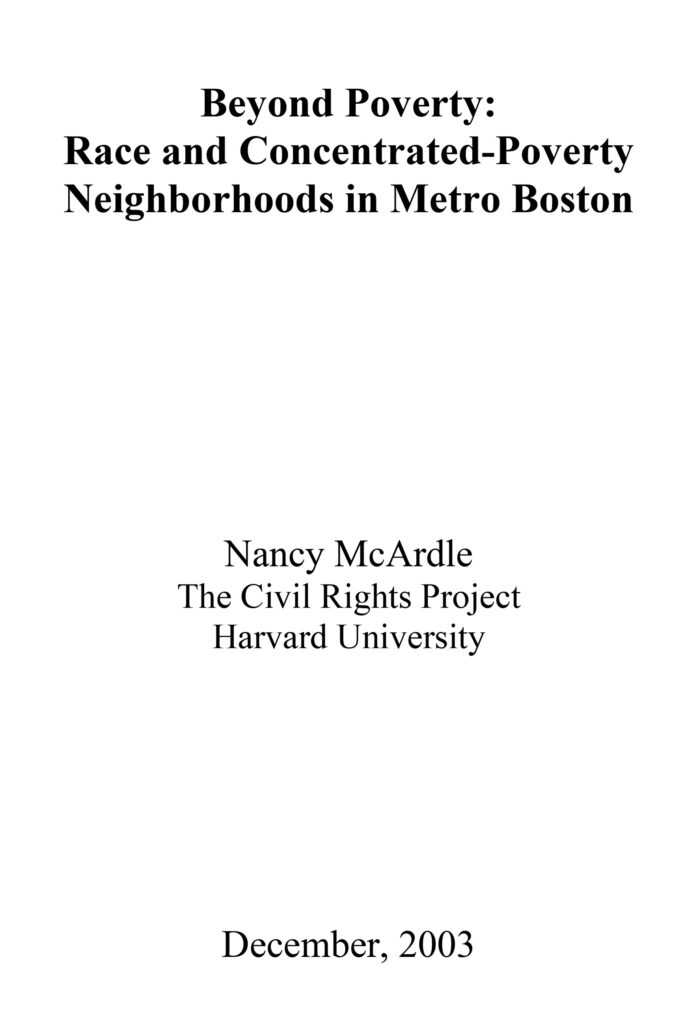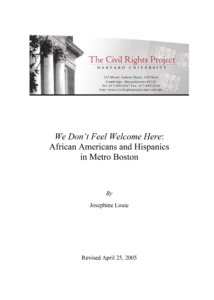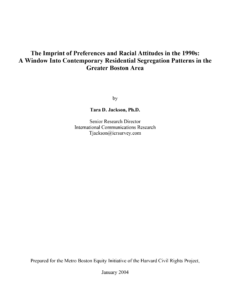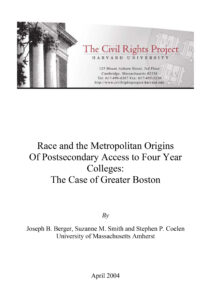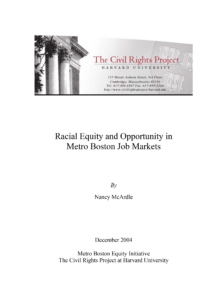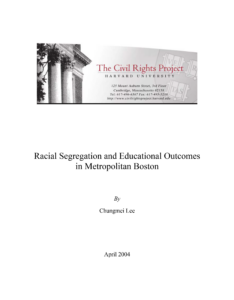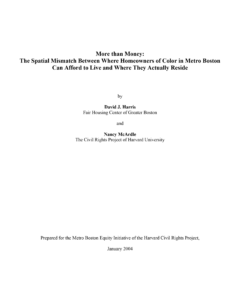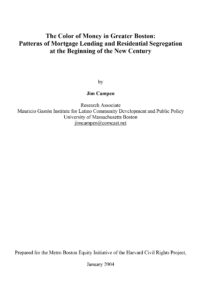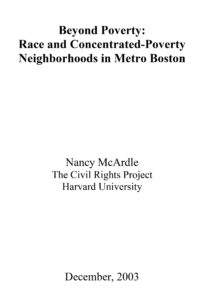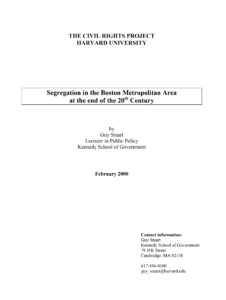Executive Summary
Although the metro region is one of the whitest, large metropolitan areas in the United States, it now has a substantial non-white population, growing much faster than the region’s white population, and a strong in-migration of Latinos and Asians producing continuing racial change. In the past, the issue of race was treated as though it was primarily a problem of the city. Today it is also a metropolitan challenge. And, the issue of race is, increasingly, becoming a suburban issue as well. Already a small majority of young blacks and a very substantial majority of young Latinos in the region live outside the inner boundaries of Boston proper. Plus more and more suburban communities will continue experiencing racial change within their borders.
Before there can be any real understanding of the meaning of segregation in the metro region, there must be some understanding of how serious the problem is, what it is related to, and why it happened. In our first report by Professor John Logan of the State University of New York at Albany, the Boston Metro Equity Initiative showed a very high level of housing segregation in the region. Earlier studies by The Civil Rights Project authored by Nancy McArdle and Guy Stuart showed severe housing segregation and related school segregation. Research by the Boston Federal Reserve Bank and others over the years have documented serious inequality of treatment by minority homeseekers in the region’s mortgage market.
This report shows the severity of housing segregation by race and poverty, and how these two forms of inequality in opportunity interact very differently for whites and minority families. It demonstrates that residential segregation is high not simply because minority families do not have sufficient income. Although there are serious average income differences by race, there is a large overlap in income distributions and a substantial income range among residents in many metro communities. Segregation in concentrated poverty communities for nonwhites is far higher than income differences can explain. The claim that what appears to be segregation by race really is just segregation by income is false.
The Metro Boston Equity Initiative is devoted to analyzing race relations and racial equity issues not simply in the city of Boston, but across the entire metropolitan region. Although greater Boston still has a large white majority and suburban sectors with very little diversity, immigration of Latinos and Asians is driving the region’s growth, and much of this population increase is taking place well outside of the city limits.
In compliance with the UC Open Access Policy, this report has been made available on eScholarship:
